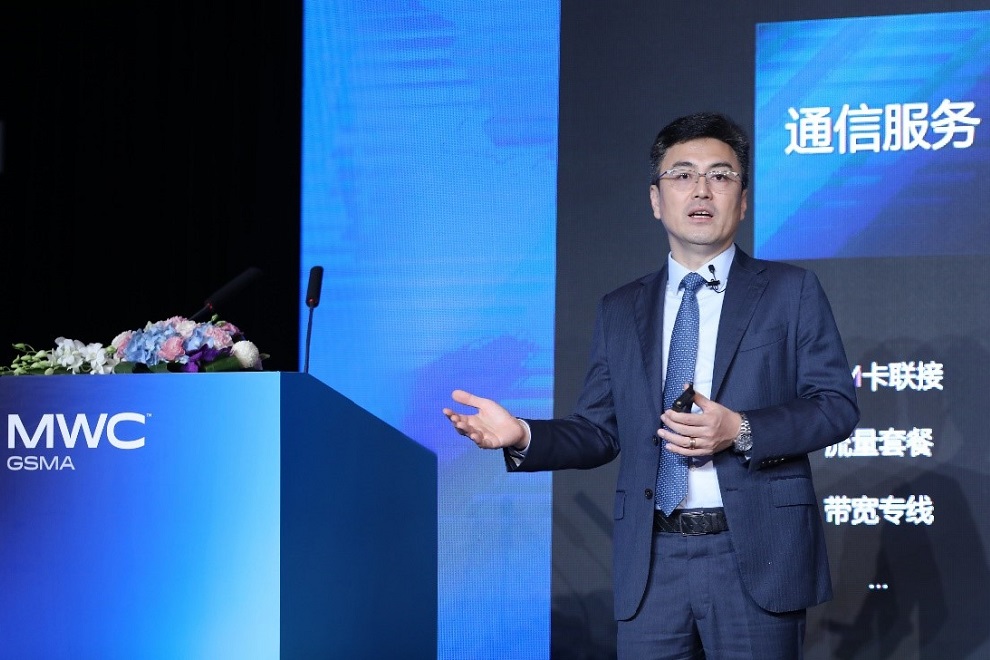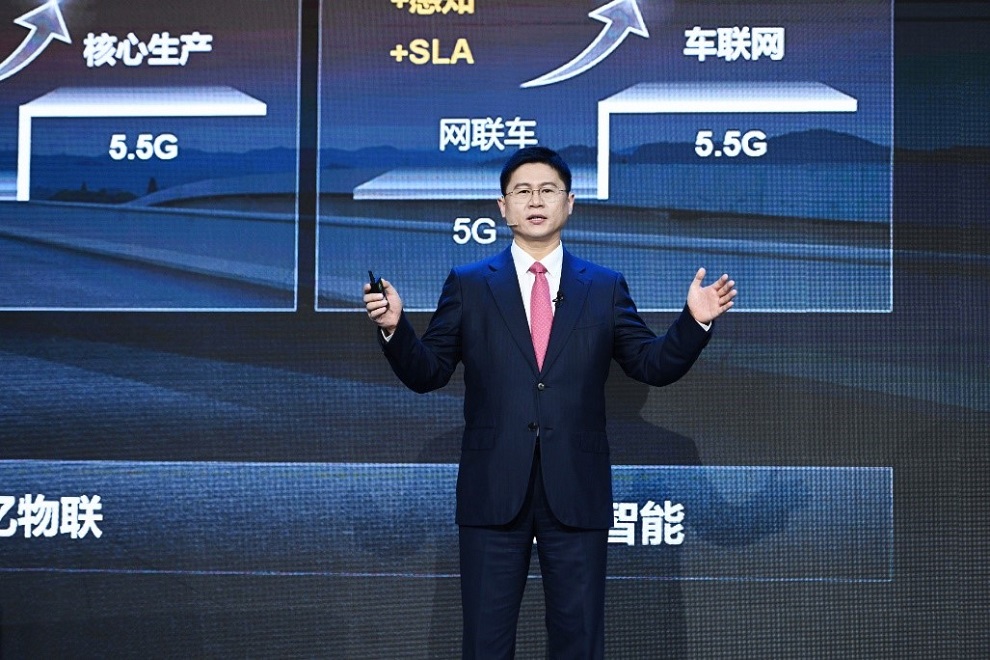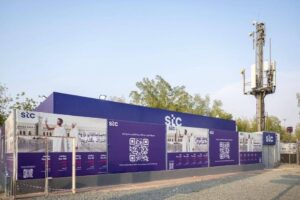At the 5G Advanced Forum during MWC Shanghai 2023, Huawei announced that it will launch a complete set of commercial 5.5G network equipment in 2024. Huawei’s Director and President of ICT Products & Solutions Yang Chaobin, who made the announcement, said that the company intends that this launch will mark the beginning of the 5.5G era for the ICT industry.
With service models and content continuously evolving, breakthroughs in technologies like glasses-free 3D are creating unprecedented immersive experiences for users. However, these new services continue to require stronger 5G network capabilities. The industry has widely agreed that 5.5G will be a key milestone in 5G evolution and that it is fast approaching.
Huawei proposed the concept of a “5.5G Era”, based on an end-to-end solution that integrates comprehensive evolved technologies, including 5.5G, F5.5G, and Net5.5G. This solution would protect operators’ previous investment in 5G, while also improving network performance by 10 times. This 5.5G Era would feature 10-gigabit peak downlink speeds and gigabit peak uplink speeds to meet increasingly diverse service requirements. It would also refresh the industry vision by using new technologies like passive IoT to unlock a market of 100 billion IoT connections.
As an advocate for end-to-end 5.5G solutions, Huawei has been working with multiple players across the industry on R&D and verification of key 5.5G technologies. Significant progress has been made in this verification process, specifically for extremely large antenna array (ELAA). This underpins 10-gigabit downlink, flexible spectrum access, which helps realize gigabit uplink, and passive IoT that can enable 100 billion IoT connections. 50G PON is another key technology that can enable 10-gigabit speeds for F5.5G ultra-broadband networks and is expected to be extensively used in homes, campuses, and productions in the future. Huawei has worked with over 30 operators around the world on technological verification and application pilots for these technologies.
In addition to the development of key technologies for 5.5G wireless and optical access networks, Yang announced that the company has been working on applying AI-native technologies to 5.5G core networks to continuously enhance network capabilities and availability. This would allow AI capabilities to be delivered to the very ends of networks, so that they can better serve numerous industries. Net5.5G promises 10-gigabit access, ultra-broadband transport, and microsecond-level latency over AI networks, allowing it to serve as a next-generation network foundation for industrial digitalization by providing high-quality network access.
Huawei Advocates Better 5G in Four Areas to Reap Full Digital Dividends
During the event, Li Peng, Huawei’s Senior Vice President, and President of the Carrier BG, called for further innovation in 5G to create new value and unleash digital dividends during his keynote at MWC Shanghai 2023. He stated that the industry needs to innovate together to meet increasing digital requirements in both the consumer and industrial markets.
Li said, “New business scenarios for people, homes, businesses, and vehicles are delivering new experiences. This is raising higher requirements for network capabilities. Enhanced network capabilities, like 10 Gbps downlink, 1 Gbps uplink, and 100 billion IoT connections, are creating a vast market space in 5.5G for carriers.”
Connecting people: Demand for new experiences boosts traffic dividends
Currently, the world has over 1.2 billion 5G users. Li explained that the pursuit of the ultimate experience by a large number of users is driving the development of innovative content and applications as well as the construction of 5G networks that can deliver a 10 Gbps experience.
Huawei predicts that these applications and content will also spur a 10-fold surge in traffic. For example, the traffic generated by naked-eye 3D content will see a 3- to 10-fold increase compared with 2D videos. A single New Calling user can generate over 1 GB of data per week while one cloud phone user can generate over 1 GB of data a day.
5G spectrum will also be crucial for achieving the ultimate user experience. Li noted that the industry needs access to new frequency bands, including the 6 GHz and mmWave bands, as well as sub-100 GHz spectrum for 5G New Radio.
Huawei has already worked with multiple carriers to perform technical verification for the 6 GHz band. Field tests show that 10 Gbps downlink can be achieved on the 6 GHz band and that the band can also achieve co-coverage with C-band for a single site.

Connecting homes: Huge room for smart life dividends
In the consumer market, skyrocketing demand for new experiences has led to a boom in innovative forms of content and applications, like naked-eye 3D, smart home management, and whole-house intelligence. This has prompted carriers to upgrade home networks that will deliver a bandwidth of 10 Gbps like private lines.
Li explained that Huawei launched the 5G FWA Square solutions, including FWA Pro for ultrafast connectivity, FWA Lite for cost-effective connectivity, and FWA Biz for highly reliable connectivity. These three solutions can help carriers better meet user needs in various scenarios and expand the 5G FWA market.
Connecting industries and machines: Turbocharging digitalization
Since 5G commercialization began four years ago, more than 17,000 private 5G networks have been built globally. These networks have turbocharged digitalization in many industries, with clear economic benefits for early adopters in the manufacturing, port, mining, oil & gas, and healthcare industries.
As industrial digitalization becomes more common, more businesses will integrate digital technology into their production processes, and they will require more advanced network capabilities that 5G can provide.
Together with partners, Huawei helped a customer develop the industry’s first 5.5G-powered flexible production line. The project found that the 5.5G deterministic network guaranteed ultra-high reliability and reduced latency down to 4 milliseconds in a high-concurrency environment.
Huawei accelerates the transformation of innovation potential into industry development momentum
Liu Kang, president of Huawei Global Carrier Marketing & Solution Sales Dept, also released “Building Innovation Momentum to Boost Digital and Intelligent Transformation” during MWC 2023 Shanghai.
“In the telecommunication industry, operators have always been the leaders and enablers of digital transformation. Operators have not only continuously optimized and accumulated their own innovation capabilities during digital transformation, but also enabled digital upgrades in thousands of industries, which has accumulated huge innovation potential,” Liu Kang said.
Huge Innovation Momentum Already Built for Carriers to Enable Digital Transformation
First, for consumers, operators have changed from providing simple voice services to providing ubiquitous gigabit and implementing intelligent interaction. Leading-edge network infrastructure is the foundation for the emergence of consumer digital business services.
Second, for the industry, enterprises are moving towards digital production from office digitalization to marketing and customer service digitalization. Key production scenarios such as remote control, AGV, and PLC are fully stimulated, greatly improving enterprise production efficiency.
Liu Kang pointed out that these achievements are inseparable from the overflow of capabilities accumulated during carriers’ digital transformation.
A New Wave of Digital Transformation Converts Innovation Momentum into Growth
To cope with the new wave of digital intelligence, Huawei believes that we should work with carriers to build three new capabilities of digital transformation.
The first is the infrastructure layer, which transforms ICT collaboration into the ability to elastic integrate strategic resources. The second is the operation layer, which converts massive data into the ability to cope with complex scenarios in an agile manner. The third is the digital service layer, which transforms advantageous services into the ability to quickly stimulate innovation.
Facing the future, Liu Kang said: “A new wave of intelligent digital era is coming. Huawei will continue to work with the industry to continuously promote digital transformation and accelerate the transformation of innovation potential into industry development momentum.”
Huawei Releases Innovations and Practices with Its Digital Managed Network Solution, Inspiring New B2B Service Growth for Carriers
Huawei also launched a product & solution innovation and practice sharing event. During this event, Huawei shared leading carriers’ latest innovations and practices with its digital managed network solution in the data communication field, aiming to help carriers transform from Internet service providers to managed service providers and seize new opportunities in digital transformation, thereby driving new growth.
At the Congress, Steven Zhao, Vice President of Huawei’s Data Communication Product Line, stated that Huawei launched its digital managed network solution and products in February 2023, which received positive feedback from carriers around the world. Many of them carried out digital managed network services (such as Managed LAN, Managed WAN, Managed Security, and Managed DCN) on top of traditional IP private lines and upgraded their transport networks to improve IP private line quality assurance and automation capabilities. This not only enables the rapid growth of these carriers’ B2B services, but also significantly improves enterprise customer experience at lower service costs.
Steven Zhao noted that carriers can expand the B2B market by upselling managed services (such as Managed LAN and Managed Security) to existing private line customers, and this will allow carriers to quickly transform from ISPs to MSPs. Huawei’s digital managed network solution enables carriers to achieve rapid revenue growth in the B2B market by providing innovative digital transformation solutions for SMEs, accelerates the digital transformation of numerous industries, and promotes social and economic development.
To date, Huawei’s digital managed network solution has been deployed in more than 140 projects around the world. Huawei will continue to increase investment in the digital managed network solution and products, and looks forward to working with customers and industry partners for more innovations and practices, thereby driving new growth.












